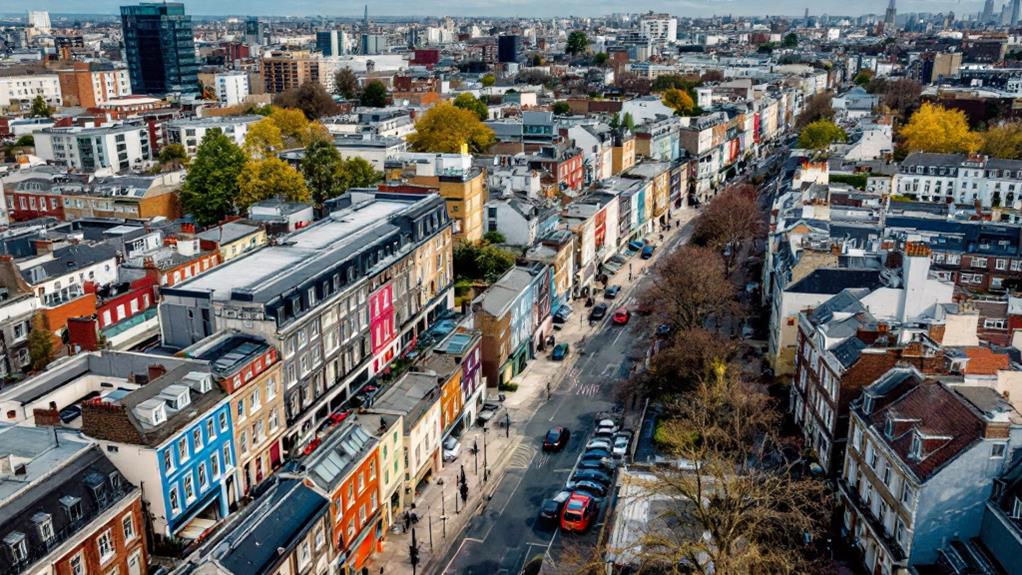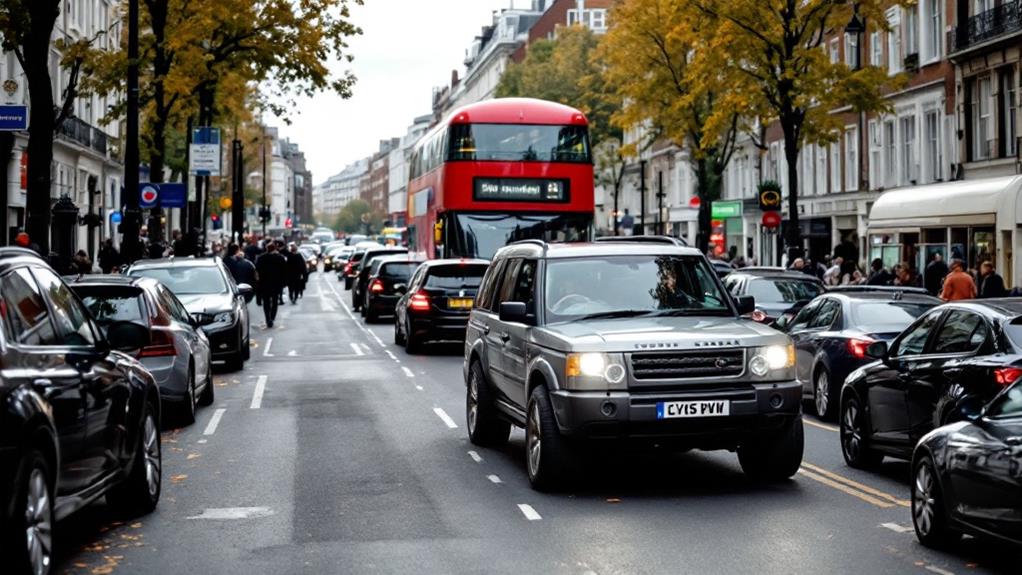Street Parking in London: Understanding Time Limits and Restrictions
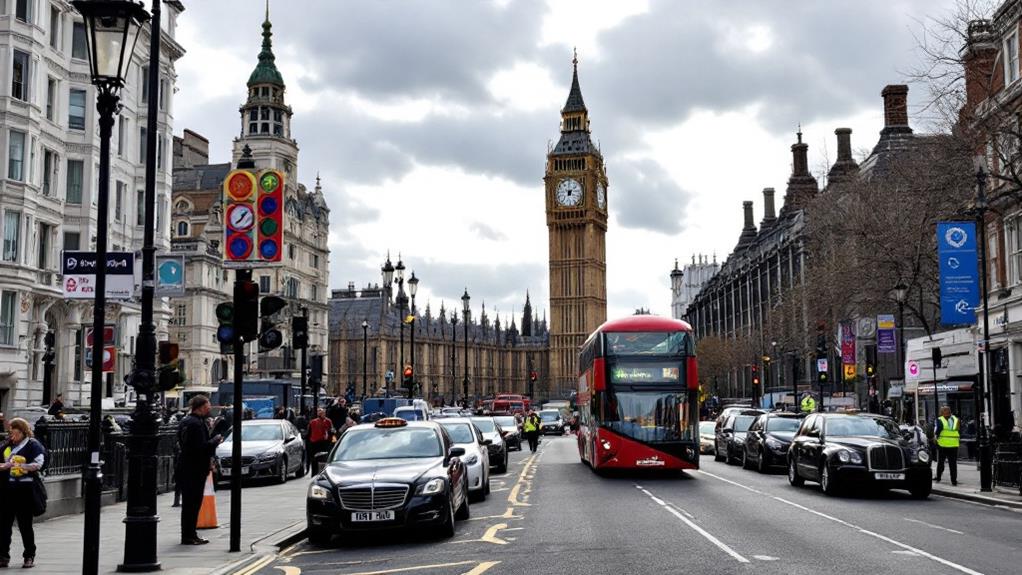
Street parking in London is governed by a complex system of time limits and restrictions. You'll encounter yellow lines, controlled parking zones, and various bay types with specific rules. Disabled badge holders have certain privileges, while loading and unloading regulations apply in designated areas. Pay attention to clearways and red routes, which have strict stopping prohibitions. Bank holidays may offer some relaxed restrictions, but be aware of dropped kerb parking prohibitions. To traverse London's streets successfully, you'll need to understand these rules and stay alert for signs and markings. There's much more to learn about commanding the art of parking in the capital.
Yellow Line Restrictions
London's streets are adorned with a language of yellow lines that drivers must learn to decipher. Single yellow lines indicate parking restrictions during specific times, which you'll find on nearby signs. Outside these hours, you're allowed to park, but ensure your vehicle fits entirely within the designated bay markings.
Double yellow lines, however, enforce a strict no-waiting policy at all times. You can't park here unless you're actively loading or unloading. Even with a valid disabled badge, you risk receiving a Penalty Charge Notice (PCN) if you're not engaged in these activities.
Pay attention to short yellow stripes on the road, as they signal loading restrictions. A single stripe allows loading or unloading, while two short stripes prohibit it entirely. The duration for these activities may be limited by local authorities, so check nearby signs for specific time constraints.
Understanding these road markings is essential to avoid fines and keep traffic flowing smoothly. Remember, yellow lines aren't just decorative – they're a key part of London's parking management system, helping to maintain order on the lively streets of the capital.
Disabled Badge Holder Parking
Three key privileges make parking in London more manageable for disabled badge holders. First, you can park for up to 3 hours without charge in pay-and-display and shared-use bays within the City of London. Second, you're exempt from time limits and charges in designated disabled parking bays. Third, you can park on single or double yellow lines for up to 3 hours, as long as you're not causing an obstruction.
As a disabled badge holder, you must:
- Display your badge clearly when parked
- Guarantee the badge details are visible
- Follow parking restrictions specific to your Zone
Remember, improper use of your disabled badge can result in Penalty Charge Notices (PCNs) or even having your badge revoked. It's essential to adhere to the rules to maintain these parking privileges.
While these exemptions offer flexibility, they don't override all parking restrictions. Always check for any additional local regulations or signage before parking. By understanding and following these guidelines, you can make the most of your disabled badge holder parking rights while avoiding potential penalties.
Loading and Unloading Regulations

While disabled badge holders enjoy certain parking privileges, all drivers must be aware of loading and unloading regulations in London. These rules are designed to manage traffic flow and guarantee safe, efficient use of street space.
Loading and unloading is restricted to specific bays and time periods. You'll find designated loading bays marked with yellow kerb lines and white plates indicating the restrictions. It's important to remember that loading is prohibited during peak hours in certain areas.
Double yellow lines with a kerb mark mean no loading is permitted at any time. Single yellow lines with transverse marks show where restrictions change. In some parking bays, you're allowed to load and unload during specified times. However, this activity is strictly prohibited in red routes or clearways.
When using a loading bay, make sure your vehicle is actively engaged in loading or unloading. Remember that these spaces aren't for general parking. Failure to comply with these regulations can result in a Penalty Charge Notice (PCN).
On-Street Parking Bay Types
On-street parking in London comes in various forms to accommodate different needs and vehicles. You'll find parking bays designated for specific vehicle classes or user groups, each with its own set of rules and restrictions. These bays are typically marked along the kerb or at the edge of the carriageway, with accompanying signs detailing control information.
When looking for a place to park, you'll encounter:
- Free parking bays: Some areas offer unrestricted parking for certain vehicles, like solo motorcycles.
- Time-limited free parking: These bays allow you to park for a specified duration without charge.
- Pay and display parking: You'll need to purchase a ticket and display it in your vehicle.
Permit holder bays are reserved for those with specific permissions, while loading bays are designated for loading and unloading activities during set times. Disabled badge holders often enjoy extended parking durations in various bay types.
To park legally, always check the time plate and nearby signs for restrictions. Pay attention to Zone entry signs, as they may indicate broader parking regulations for the area. Remember that restrictions apply differently across various bay types, so stay informed to avoid penalties.
Controlled Parking Zone Rules
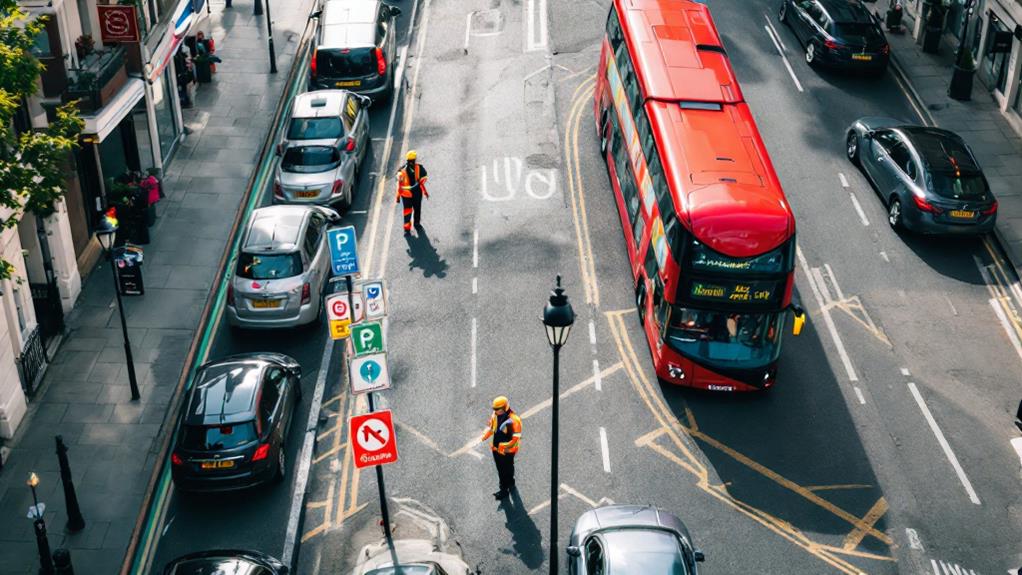
Controlled Parking Zones (CPZs) in London add another layer of complexity to on-street parking. The entire City of London operates as a CPZ, where you'll need to pay close attention to specific rules and times to avoid fines. Within this zone, parking is strictly controlled Monday through Friday from 7am to 7pm, and on Saturdays from 7am to 11am.
When you're looking to park within the zone, you'll need to check the time plates for each bay. These display the specific restrictions for that location, as rules can vary from one street to another. You'll typically need to pay for parking during controlled hours.
Kerbside parking in the CPZ follows yellow line restrictions. Single yellow lines prohibit parking at certain times of the day, while double yellow lines mean no waiting at any time, with exceptions for loading and unloading. It's essential to be aware of these distinctions to avoid penalties.
Clearways and Red Routes
Clearways and red routes in London present additional parking restrictions you'll need to traverse. Clearways prohibit stopping on the main road except in emergencies, while red routes enforce even stricter rules. Urban clearways restrict stopping during peak hours, but red routes prohibit stopping completely, including for loading or unloading.
When encountering these areas, keep in mind:
- Clearways have no road markings but may have lay-bys where stopping is allowed.
- Red routes with double red lines indicate a 24/7 stopping prohibition.
- Red route clearways have no road markings but still prohibit stopping, except in designated lay-bys.
It's critical to observe specific restrictions for taxi and e-taxi ranks in these areas. Remember, stopping restrictions on clearways and red routes are enforced around the clock. Violating these rules can result in penalties or your vehicle being towed.
To avoid issues, always look for signs indicating clearways or red routes. Pay attention to any designated lay-bys where stopping might be permitted. If you must stop, make certain it's only in an emergency on clearways or in appropriate lay-bys on red routes. Stay vigilant to avoid costly penalties and keep London's traffic flowing smoothly.
Bank Holiday Parking Changes
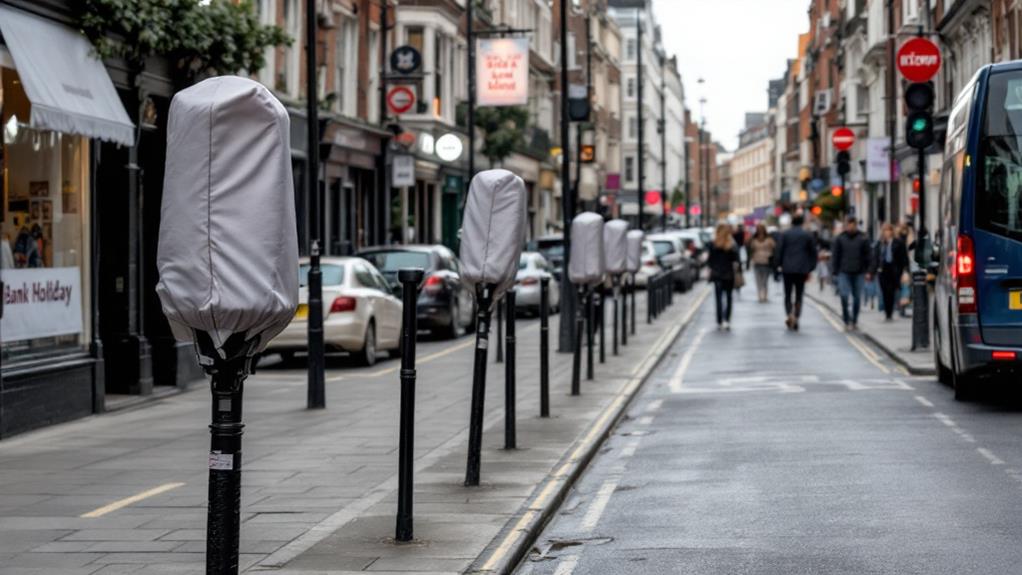
Bank holidays in London shake up the normal parking rules, giving drivers a bit of relief in some areas. On these special days, you'll find that pay and display bays in the City of London aren't enforced, except for suspended bays. Single yellow lines also get a break, but watch out for dropped kerbs and raised carriageways where restrictions still apply.
However, don't assume all parking is fair game on bank holidays and public holidays. Double yellow lines, footway parking, and moving traffic violations are still strictly enforced 24/7. The same goes for dropped kerbs, suspended bays, and permit holder bays, so steer clear of these designated parking areas unless you have the proper authorization.
It's essential to remember that parking restrictions can vary by location, even on holidays. Always check the time plates at your specific parking spot to avoid any nasty surprises. While bank holidays offer some leniency, they don't grant a free-for-all when it comes to parking. Stay informed about the rules in your area to confirm you don't end up with an unexpected ticket on what should be a relaxing day off.
Dropped Kerb Parking Prohibitions
The rules surrounding dropped kerbs and raised carriageways in London can catch many drivers off guard. It's important to acknowledge that parking is prohibited in these areas, even if there are no signs or markings present. This restriction applies to all vehicles registered in the UK and abroad, regardless of whether there are lines along the edge or centre of the carriageway.
You might encounter dropped kerbs or raised carriageways in various situations:
- Pedestrian crossings
- Residential driveways
- Wheelchair access points
Unlike other parking restrictions, these areas aren't always indicated by signs or road markings. However, the prohibition still applies, and you may receive a Penalty Charge Notice (PCN) if you park there. This charge can be issued even if there are no single yellow lines or other visible parking restrictions.
Remember that dropped kerbs are areas where the footway is lowered to the level of the carriageway, while raised carriageways have the road surface elevated to footway level. To avoid fines and guarantee accessibility for all, it's pivotal to be cognizant of these often-overlooked parking rules when driving in London.

